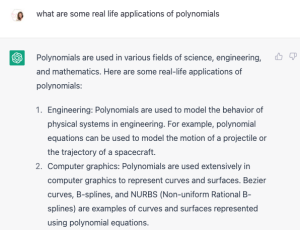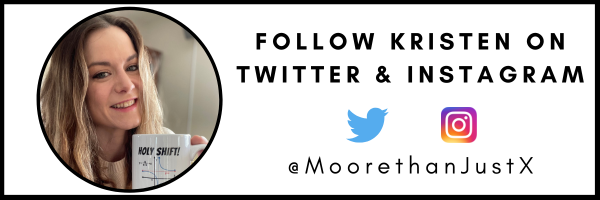TL;DR:
- There are natural energy surges in the classroom. Learning to work with them keeps your classroom engaged, not chaotic.
- Lessons that are grounded in the real world, relevant to students’ interests or aspirations, and raise the rigor and expectations of students provide a naturally more engaging stage for students to learn.
- Teachers can use AI to help identify real-world applications of their content and use student questionnaires to determine which of these applications is most relevant to their students.
There are certain times of the year when the classroom feels chaotic. It’s often the days leading up to a break or the weeks leading up to the end of the school year. There’s a nervous and excited energy in the air, and you’ve got two options. You can harness it and use it to move your students purposefully through the end of the year. Or you can run from it and spend that time stressed and overwhelmed with a chaotic classroom. You’re here because you want to teach better, so I’m guessing you’re interested in the former.
To harness end-of-the-year energy, you’ve got to make learning matter.
Students don’t want to just sit still and learn the standards. They want to be engaged, entertained, and dare I say educated—in a meaningful way. To do that, you’ve got to keep your learning real, relevant, and rigorous. Let’s break that down.
Students want to be engaged, entertained, and dare I say educated in a meaningful way. To do that, you’ve got to keep your learning real, relevant and rigorous. Share on XMake the Learning Real
Not every single standard is going to be directly related to the real world. Just ask your math teacher friends. BUT nearly every topic (yes even those in math!) can be connected to the real world. When the students ask, “When am I ever going to need this?” you’ve got to be ready to answer them. And now, with advances in technology—AI and specifically, ChatGPT—you can figure out exactly what real-world aspects your content is connected to. No prior knowledge is necessary!
If you don’t know ChatGPT, it’s a free and easy-to-use AI system that gives you curated feedback based on your interactions. Check out this example of real-life applications of polynomial equations:

No clue what a Bézier curve is or if your students will care? That brings us to our next point. We have to make sure that the applications we choose are relevant.
Make the Learning Relevant
It’s not enough for students—especially students in the upper grades—to know that the content could be used in THE real world. They need to know when it might be used in THEIR real world. Remember when you started the school year and you sent out those student surveys and questionnaires to get to know them? It’s time to bust them back out.
Anytime your students are getting antsy, check back on your student survey to find interests and aspirations that you can tap into. You can even use AI systems to help you connect real content applications to the topics your students are most interested in. We know how building connections with our students creates a positive learning environment. But did you know…
Connection is the key to student engagement.
By connecting your students and your standards through purposeful lesson design—warm-ups, activities, readings, videos, applications, and more—you’re going to get more buy-in from your students. Buy-in builds interest, which leads to more engaged learners. Encouraging students to channel their excited energy into positive actions can keep them engaged and focused on their learning. But we don’t just want to have our students excited and engaged. If we just wanted that we could throw a class ice cream party. We want our students to excitedly learn the relevant material.
[scroll down to keep reading]Make the Learning Rigorous
It does no good for you or your students to build a lesson around fun-filled activities. However real or relevant it may be, if they are just fluff, the excitement will wane as students see that there’s no real meaning behind it.
You’ve got to ensure that your lessons are rigorous. Your students are up for the challenge. They’ve been working with you all year, learning skills, and building strong relationships with you and their classmates. They’re ready to do something different, to try harder things.
When you set the expectation high, your students will rise to that level of expectation. So take your real and relevant topic and find an appropriately challenging way to engage your students in the learning process. Projects, PBL, service learning, and design challenges are all excellent strategies with low floors and high rigor ceilings for student engagement and success.
When lessons are real, relevant, and rigorous, you’ve hit the engagement trifecta.
We know the spring season can be a challenging one for student engagement. When you design lessons that are real, relevant, and rigorous, you’ve hit the student engagement trifecta. Students will not only have an understanding of “When am I ever going to need this?” but they will be actively engaged in processes designed to answer that question themselves!
About Kristen Moore
Kristen Moore is a veteran mathematics educator who believes that math class should be about more than just solving for x. Kristen enables students to grow in both their confidence and capabilities in the secondary math classroom, with real, relevant, and rigorous learning experiences.
In her classroom, Kristen provides engaging mathematical experiences from projects to PBL, turning students into problem solvers instead of calculators–unlocking students’ potential to become problem solvers of the future. In Kristen’s own real-life PBL, she started her own company, Moore than Just X, LLC, providing teachers with training and resources that bring authentic learning experiences to the math classroom. Through project-based learning, Kristen helps teachers focus on connecting students and standards, boosting engagement, and bringing life back to the math classroom.



